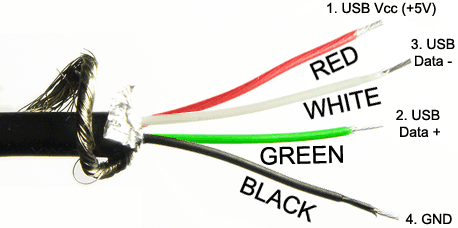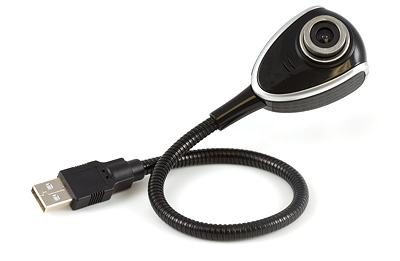USB(Universal Serial Bus) Cable

Introduction of Universal Serial Bus

Characteristic of USB
Hot swappingUSB devices are hot-swappable(plug-n-play) i.e. you can plug n play them and unplug them any time. when you attach the device using a cable to PC, communication is initiated within a fraction of seconds. The versions are backwards compatible and the speed is limited by the slower device.
Automatic configuration
The USB host controller chipset installed on the host like PC motherboard or an add-on USB port card manages driver software and allocates bandwidth to each USB device automatically when attached to the bus. When a device is added or removed, the USB host controller automatically loads or unloads the driver for that device contributing in easy installation for user making them free from tedious procedures of installation.
Interrupt sharing
A USB host controller occupies one interrupt that is shared among all USB devices attached to the host. This allows multiple USB host controllers to be installed in a system and function without any conflicts with multiple USB devices and host.
Bandwidth sharing and allocation
A USB 1.1 bus provides 12 Mb/s of bandwidth and a USB 2.0 bus provides 480 Mb/s of bandwidth, which is shared among all devices attached in the USB network. Many devices may communicate simultaneously on a USB such that adequate bandwidth is available to service all of them at the same time. Properly designed USB peripherals and drivers use bandwidth dynamically, releasing bandwidth they are not using so that it can be used by other devices. For isochronous(time-critical) tasks such as audio/video streams or Internet connection, USB permits dedicating bandwidth as required by a particular peripheral, although that dedicated bandwidth then becomes permanently unavailable for use by other peripherals during that time.
Embedded power connections
Beside providing a data connection, USB also provides electrical power to peripherals, allowing you to eliminate the tangle of power cables required by traditional peripherals. This power is limited to 500 milliamps (mA), which must be shared by all unpowered devices connected to the USB port. In practical, it means that only low-power peripherals such as keyboards and mice can be powered directly by a USB connection. High-power peripherals such as printers and scanners usually have their own power supply and are powered directly from a standard AC source.
Workinng of USB
When a USB device is first connected to a USB host, the USB device enumeration process is started. The enumeration starts by sending a reset signal to the USB device. The data rate of the USB device is determined during the reset signaling. After reset, the USB device's information is read by the host and the device is assigned a unique 7-bit address. If the device is supported by the host, the device drivers needed for communicating with the device are loaded and the device is set to a configured state. If the USB host is restarted, the enumeration process is repeated for all connected USB devices.
The host controller directs traffic flow to devices so that no USB device can transfer any data on the bus without expressing a request from the host controller. In USB 2.0, the host controller polls the bus for traffic, usually in a round-robin fashion.The host is responsible for the following tasks:

The data is transferred through twisted pair named "Data +" and "Data -" which are conductors twisted together. The wires are enclosed in a further layer of shielding. NRZI (Non Return to Zero Invert) encoding scheme used to send data with a sync field to synchronise the host and receiver clocks. The data transmission is always symmetrical i.e. one conductor transmits the data signal while other always the inverts the signal.
The communication on the USB is carried out in two directions and uses different types of transfer mechanism. When data directed from the host to a device is called downstream or OUT transfer while in other direction is called upstream or IN transfer. Depending on the device type different transfer variants used are:
1. Control transfer
Control transfers are used to request and send reliable short data packets. It is used to configure devices and every one is required to support a minimum set of control commands. Here is a list of standard commands:
a. GET_STATUS
b. CLEAR_FEATURE
c. SET_FEATURE
d. SET_ADDRESS
e. GET_DESCRIPTOR
f. SET_DESCRIPTOR
g. GET_CONFIGURATION
h. SET_CONFIGURATION
i. GET_INTERFACE
j. SET_INTERFACE
k. SYNCH_FRAME
2. Bulk transfer
It is used to request or send reliable data packets up to the full bus bandwidth. Devices like scanners use this transfer type.
3. Interrupt transfer
It is similar to bulk transfers which are polled periodically. If an interrupt transfer is submitted the host controller driver will automatically repeat this request in a specified interval(1ms - 255ms).
4. Isochronous transfer
Isochronous transfers send or receive data streams in real-time with guaranteed bus bandwidth but without any reliability. In general these transfer types are used for audio and video devices.
USB Connectors




Applications
| Mobile phones, Tablet,etc. | USB Mobile charger | Printers |
 |
 |
 |
| Mouse | Webcams |
 |
 |
CACKLE comment system



